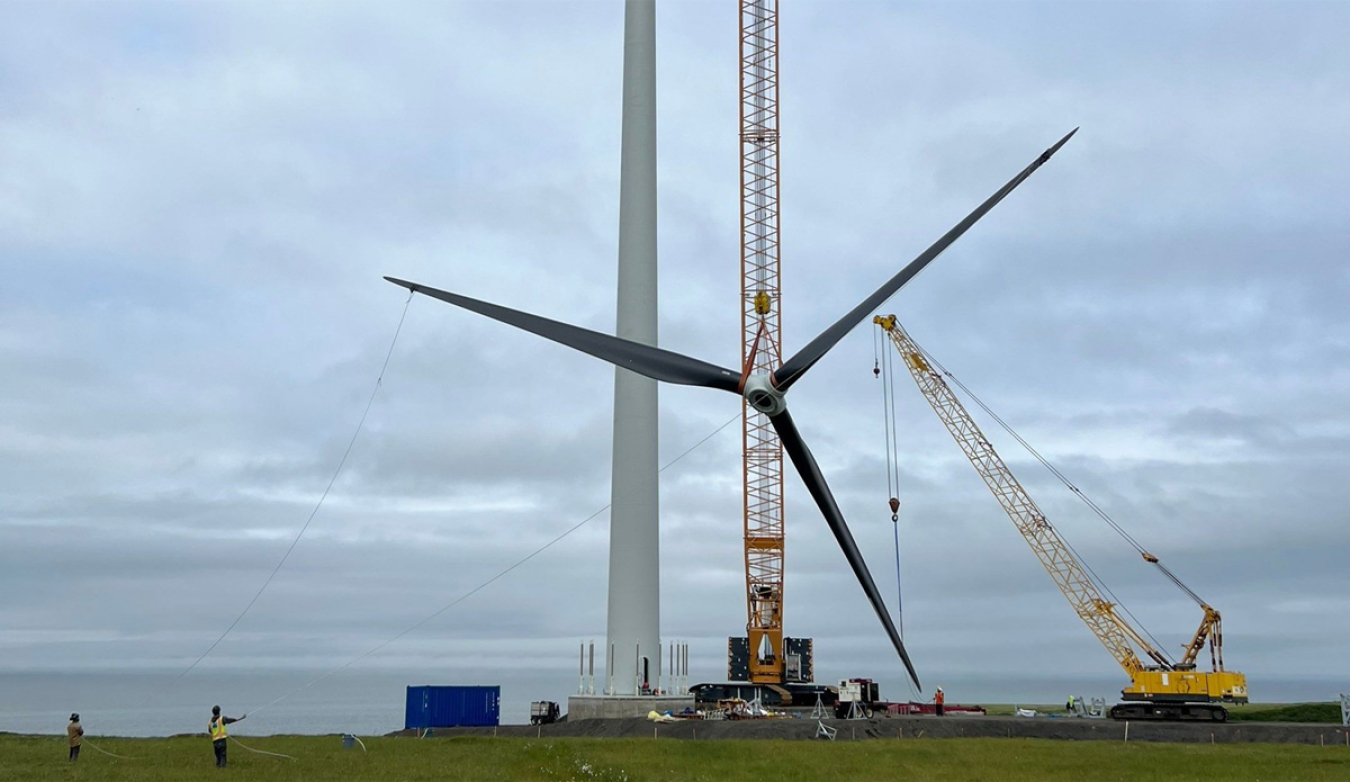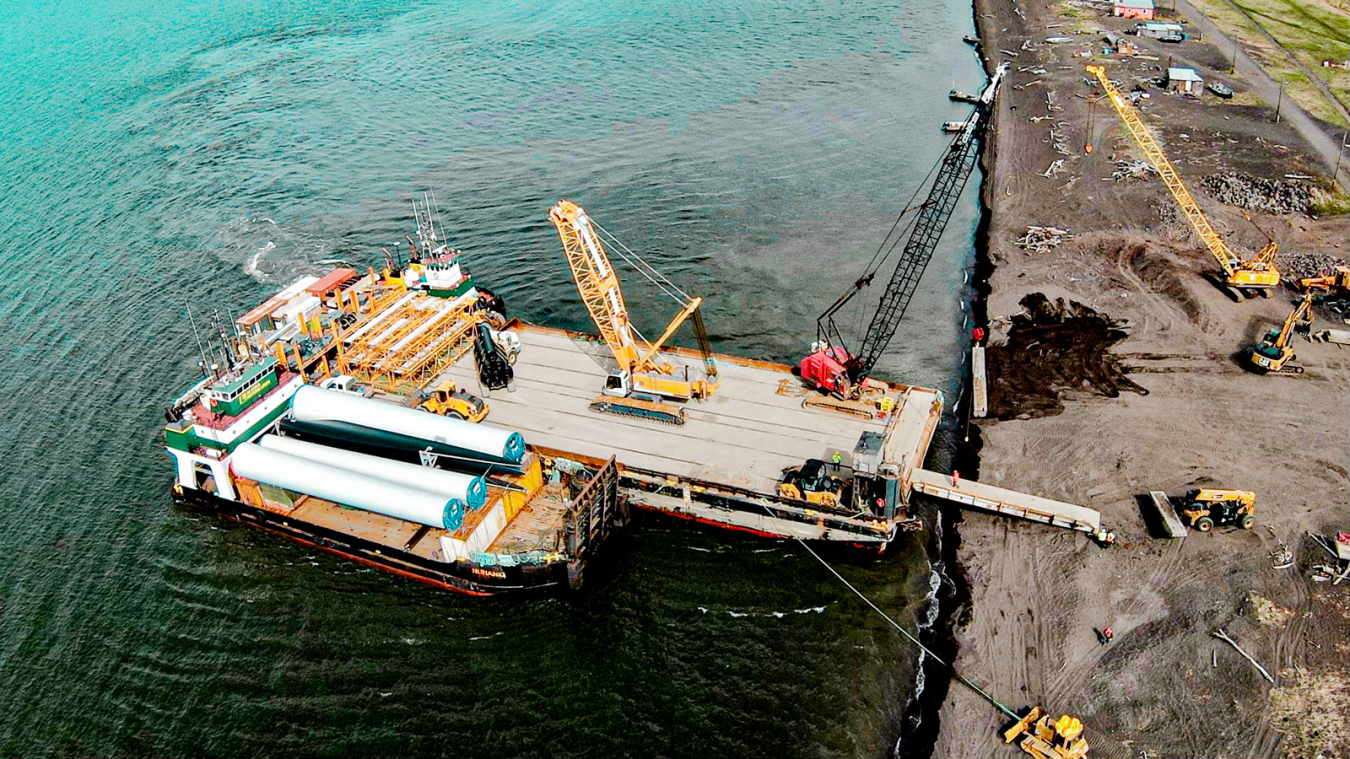Wind Project to Save Utility and Villages $11.4 Million
Office of Indian Energy Policy and Programs
April 8, 2024Wind Project to Save Utility and Villages $11.4 Million
In this Tribal Energy Snapshot, learn more about the wind energy project jointly developed by Alaska Village Electric Cooperative, Inc. (AVEC) and Stebbins Native Corporation in Alaska, also benefiting the nearby communities of Stebbins and Saint Michael. The project was co-funded by the U.S. Department of Energy (DOE) Office of Indian Energy.

Project Quick Facts
Through a joint venture, AVEC and Stebbins Native Corporation installed a 900-kilowatt (kW) wind turbine to generate wind energy and help power two remote Alaska communities, Stebbins and Saint Michael. Both are Alaska Native Villages located on the Norton Sound, an inlet of the Bering Sea on the western coast of Alaska.
AVEC is a nonprofit electric utility providing electrical services to 58 remote rural Alaska villages, including Stebbins and Saint Michael, and others scattered across 400,000 square miles of Alaskan wilderness. Each year, AVEC uses 160 diesel generators and purchases more than 9 million gallons of imported fuel to produce power for its member communities. Due to the remoteness of Alaska communities, the cost of diesel is much higher than in other areas of the United States, resulting in higher energy costs for many Alaska residents. In Stebbins and Saint Michael, for instance, heating fuel diesel cost as of April 2024 was roughly $7.41 per gallon.
The joint venture between AVEC and Stebbins Native Corporation was developed to provide enough wind energy to supply 50% of the total energy for Stebbins and Saint Michael, helping power the approximately 328 buildings in the two communities. The project will ultimately help stabilize or reduce energy costs, reduce diesel use, spur local economic development, and curb fossil fuel emissions.

Take a glance at the project by the numbers:
Total energy generation:
The system generates roughly 2,529 megawatt-hours of energy per year—enough to supply 50% of the total energy use across the two communities.
Emissions avoided:
The system avoids about 104,700 gallons of diesel fuel each year. This reduces greenhouse emissions by about 930 metric tons annually, which is like removing 207 gasoline-powered cars from the road each year.
Cost savings:
The total estimated cost savings for the utility and communities is $11.4 million over the 25-year life of the system.
Total project cost:
The cost of the project is $10.31 million, shared by DOE ($1.75 million), AVEC/Stebbins Native Corporation as a joint awardee ($6.07 million), and other federal funding ($2.49 million).
Insight From the Project Team
Learn from Onya Stein, project manager with AVEC, on her experience with the project.
Why did the community initially pursue this clean energy project?
The energy vision for this project started over a decade ago. It involved many infrastructure projects, including a new, larger power plant and bulk fuel storage facility to carry both Stebbins and Saint Michael and an electrical intertie to connect the two rural microgrid communities. There was state funding available at that time to study and identify local renewable resources, such as wind, to reduce the amount of diesel fuel transported and used for power generation, reduce emissions, and stabilize energy costs for AVEC member communities. Wind was found to be an abundant resource in the region.
How has the community benefited from the project?
The communities of Stebbins and Saint Michael are now receiving power from the one 900-kW wind turbine in Stebbins. The design goal is to produce 50% of total energy generated in Stebbins and Saint Michael, ultimately reducing the diesel used in their region for power generation. Since the cost of fuel is a direct pass-through in AVEC rates, less fuel means financial savings to consumers.
In your opinion, what is the most exciting part of the project?
The most exciting part of the project is the turbine being oversized for the communities. This means when the wind is strong enough, AVEC will be able to go “diesels-off” and still produce recovered heat for the communities.
Learn More
Learn more about this project, including additional background information, cost, and status on the project summary page.
Explore more projects through the tribal energy projects database.

